- Home
- Knowledge library
- Natural resource capture and conversion by cereal crops
Natural resource capture and conversion by cereal crops
Discover how wheat and barley capture and convert natural resources (solar energy, carbon dioxide and water) into edible (e.g. grain) and other forms of biomass/energy.
Growth guides for wheat, barley and oilseed rape
Resource capture and conversion
Rates of energy absorption, carbon dioxide (CO2) fixation and water (H2O) transpiration by leaf canopies are inherently linked, so light use, water use and biomass formation are roughly proportional.
This means that a lack of light and/or water can constrain biomass production (e.g. yield).
Generally, natural resources cannot be controlled easily (especially in rainfed crops), so yields must be managed primarily through influencing their capture.
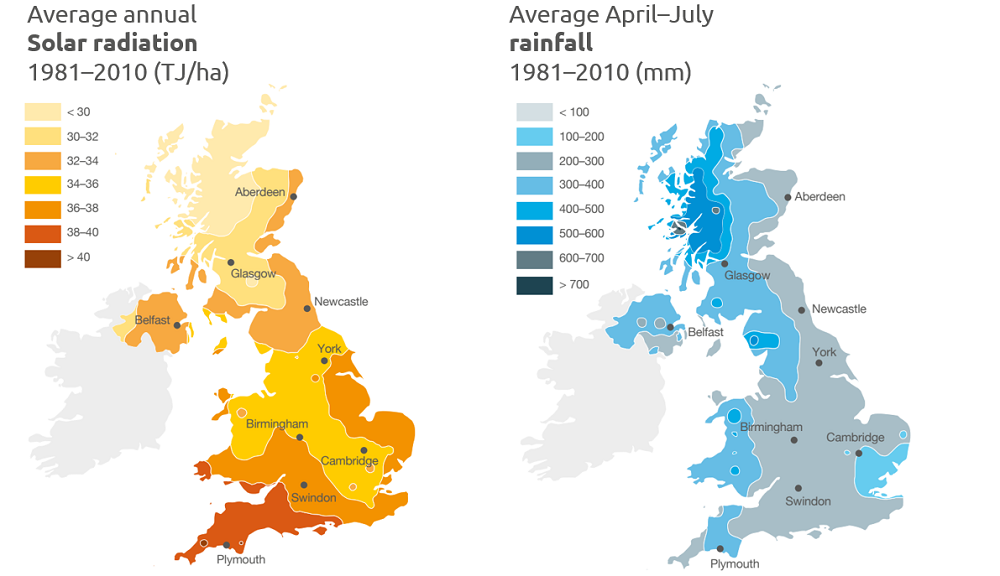
Light capture (solar radiation)
- Yield (t/ha) = light energy (TJ/ha) x capture (%) x conversion (t/TJ) x harvest index
In the UK, light limitation of wheat and barley yields is more common than water limitation.
Dry matter growth in the UK usually relates directly to solar energy intercepted by the green canopy. About half of this radiation is photosynthetic. Light capture depends mainly on green canopy longevity. In winter wheat, each five extra days of full light capture by a green canopy should be associated with 1 t/ha of extra crop growth.
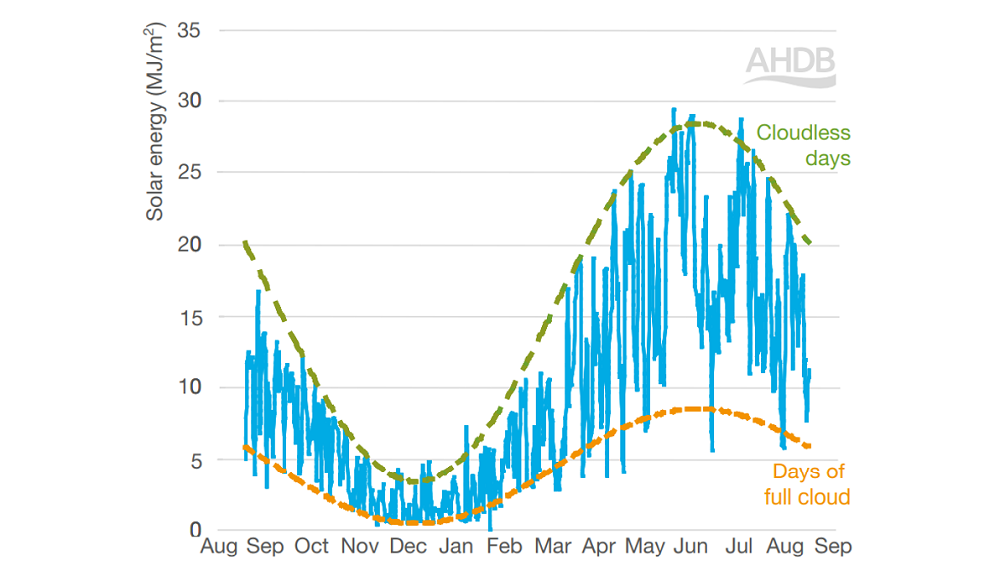
Water capture
- Yield (t/ha) = available water* (mm) x capture (%) x conversion (t/ha/100 mm) x harvest index
* The sum of summer rainfall and soil-held water.
To absorb carbon dioxide, leaves must lose water to the air in transpiration. On an average summer day, transpiration uses about 3 mm of water. For each tonne per hectare of dry matter formed, winter wheat transpires about 20 mm of water. Drought restricts growth.
Factors that affect water availability for transpiration
- Region – rainfall amounts and distribution
- Soil type – moisture retention through summer, when transpiration generally exceeds rainfall
- Soil depth and rooting
- Soilborne diseases that reduce root function
In the UK, water limitation becomes more common as yields increase.
Water capture depends mainly on rooting depth. On a soil holding 15% available water, an increase in rooting depth of 14 cm should provide an extra 20 mm of water, which should support one extra t/ha of biomass growth.
Carbon dioxide capture
Atmospheric carbon dioxide is about 400 parts per million (ppm). It is increasing at about 21 ppm per decade. In this range, crop growth relates almost directly to carbon dioxide concentration. Atmospheric change is increasing winter wheat growth by about 5% per decade. Variation in carbon dioxide concentrations is not significant on a regional or seasonal scale.
Solar energy conversion rates in cereals
Biomass production can be monitored to indicate the success of resource capture, based on the following rates of conversion.
Note: Resource conversion is thought to be influenced more by variety choice than by crop management.
Energy conversion in wheat
Benchmark rates of conversion by wheat canopies are 1.2 t biomass per terajoule (TJ) of energy intercepted and 5 t/ha biomass per 100 mm of water captured and transpired.
Resource conversion can be reduced if storage capacity for assimilate is insufficient (sink limitation) but this is not often the case in wheat, because grain is usually responsive to assimilate availability (source limitation).
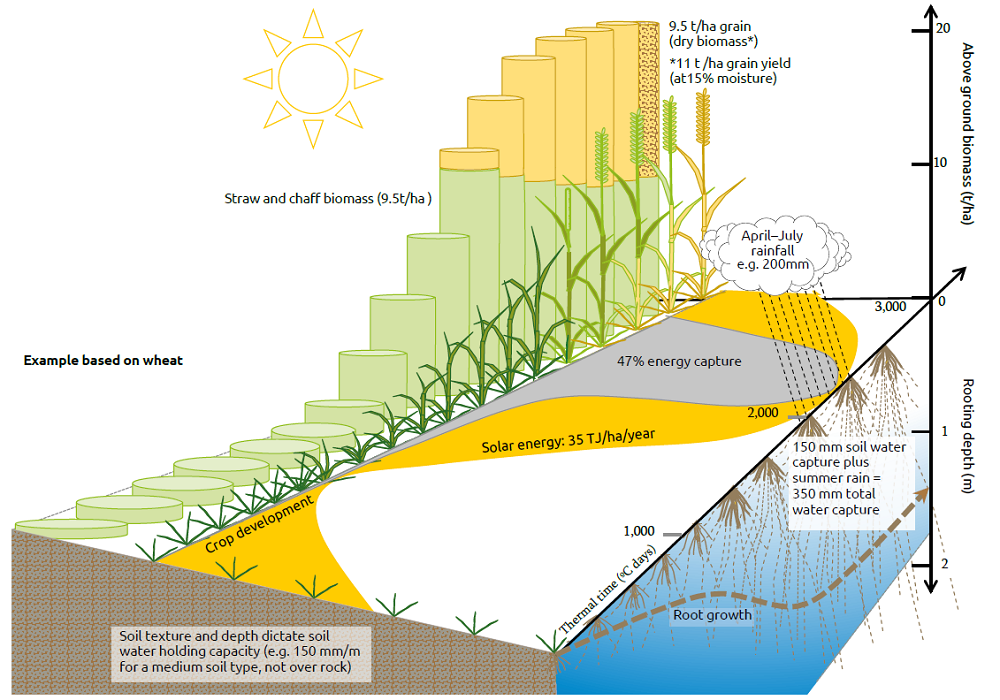
Energy conversion in barley
Estimated rates of conversion by barley canopies are 1.1 t of dry plant biomass per terajoule (TJ) of energy intercepted and 4.6 t/ha biomass per 100 mm of water captured and transpired.
Conversion rates are less than for wheat, probably because barley is more sink-limited.
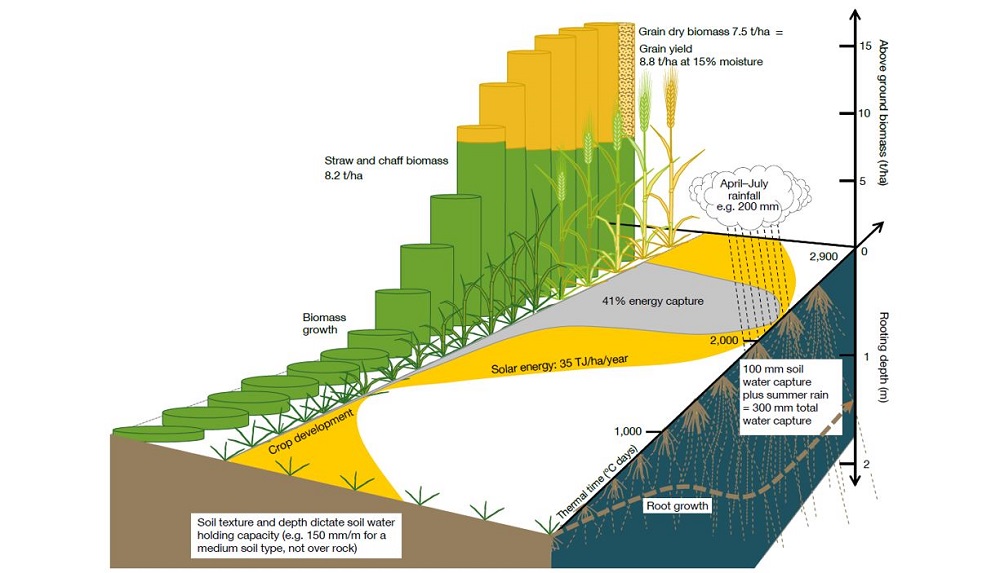 AHDB
AHDB
The above illustrations summarise the capture and utilisation of natural resources, particularly solar energy, water and carbon dioxide in wheat (top) and barley (bottom).
It shows how these resources convert into grain and non-grain energy (expressed here in t/ha biomass or grain).
It also introduces the concept of ‘thermal time’, which represents the time taken for the crop to move from one growth stage to the next, based on the cumulative heat received.
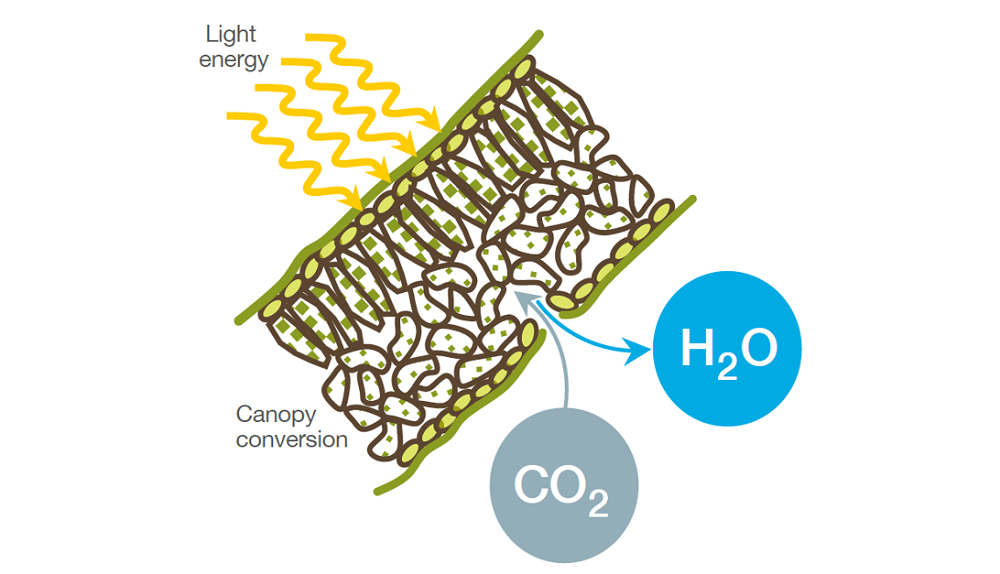
Topics:
Sectors:
Tags:

